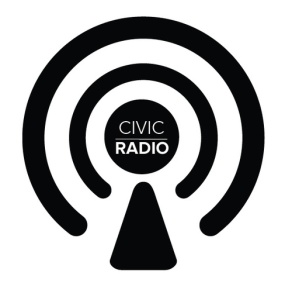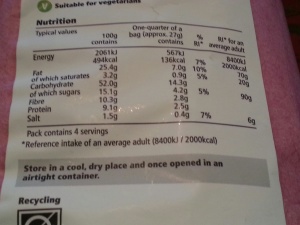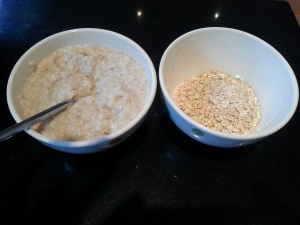Here at Pod Academy we are convinced that podcasting is a great way to get research out to a wide audience, to make an impact.
If you’d like to try your hand at making a podcast, here are some tips to help you, they came out of a course we ran for our volunteer producers. And take a listen to the podcast above – it demonstrates a number of different approaches you might take.
Preparation
Preparation 1: Preparing around the CONTENT
What are you trying to achieve?
First of all decide, what are your objectives for the podcast. Of course two of your principal objectives will be:
- To make people care about the subject
- To entertain
But you may have other objectives, such as: –
- To get the audience to see the relevance for themselves of this research
- To help your audience understand something complex
- To inform them about something new in the field
- To introduce them to something quirky they may not know about
It may be that your objectives span all or none of these, but whatever you are aiming to achieve, be clear about it from the outset as this will help in your preparation and will inevitably influence the questions you ask, the tone, the writing and the editing.
What is the story? Why should we care?
This American Life’s Alex Blumberg says you should be able to pitch a story in this way:
- I want to make a podcast about…..
- It’s important because…..
According to Alex this simple formula will give you the story. Other people talk about this as ‘the angle’ of your podcast. It is certainly an essential stage to go through in the preparation for your podcast.
To decide what is the angle, have a preparatory conversation with the academic whose research you are covering and really pin him/her down on the following questions:
- Why is your research/your work/your book important?
- What is the significance of your research/this area of study/your work?
- We hear a lot about……….these days – how does your research relate to that?
- What is your big idea? What is the take-home message of your research/your work/your book? What is the story?
- What is ground breaking about it?
- Why should the audience care about your research?
- If it were a newspaper article, what would the headline be?
Remember, one way of finding the angle is to see if there is an ‘est’ word associated with the research – the first, the best, the worst, the biggest, the smallest, the most, the last etc. Ask the academic.
After that conversation, think about it yourself. Decide: What is this podcast about?
The audience
Part of your preparation should be to think about your audience and what would interest them. Pod Academy has a broad audience, but it is helpful to imagine just one listener, because then you are more likely to make an appealing podcast, that works as a communication from one person to another. Try this listener:
A bright, engaged 28year old who is prepared to listen to and maybe even sign up with Charity street fundraisers, who probably plays or watches a bit of sport, has good friends who he/she values, has a favourite soap opera, and listens to an eclectic range of music. Importantly, has a 40 minute commute to work, during which time they listen to podcasts.
How can you engage/entertain/inform this listener?
Chunking the content
Think of your content in 4 chunks (note: they might not divide up as neatly as this suggests – for example, in the interview you might ask some of the more detailed questions in Chunk 4 when you are on chunk 3 about the significance of the research.)
Chunk 1: Why did they undertake this research?
You are looking for 2 main things here – personal motivation, any important background/context about this field.
The sorts of questions to ask……
- Why did you undertake this research; what attracted you to this area of research?
- Is there any significant history to this area of research? What’s been happening in this field?
- Are there any conflicts or debates in this field? If you had to describe the debates in this field….?
Chunk 2: Why is this research important?
You are looking for the significance of the research for people, the planet, the field. This is still a broad sweep chunk – helping you to tell the audience why they should care.
- What has the academic discovered? (follow up with specific questions) – what is the story? What is the significance?
- We hear a lot about………these days. [how does your research relate to that?]
- What is the impact likely to be? What difference will it make?
- A question about the way the academic has framed the research – ‘You’ve called your book, Cosmic Cocktail – why cocktail?’
Chunk 3: The detail
This is where you drill down to discover the findings of the research – key facts and figures, and, very importantly, – examples, metaphors, anecdotes, stories to illustrate the findings. Try to have at least 3 examples, stories, word pictures per interview.
The sorts of questions you might ask are:
- What steps did you go through
- Background to the subject matter of the research (‘ you are writing about PR and communication in 16th century Venice, tell me a bit about Venitian society at that time….’ Or ‘you are exploring the discovery of the Higgs Bosun particle, can you tell me about Peter Higgs, the man – what is he like?’
- You are on record as saying ……..Tell me why you say that? What evidence do you have for that? Could you give me an example?
- In your book you say……..- what exactly do you mean by that? (there are likely to be 2 or 3 questions that start something like this)
- If the research is about a person, ‘tell me about her life’
- Tell me a bit about the people you met….
- Where is the impact likely to be felt most? Who is likely to benefit from your findings?
- Tell me more about…..
- Did anything surprise you?
Chunk 4: Reflection
This is a chance to get the academic to think about what they have said, maybe even re-visit some of the ‘why this research is important/ what’s the story’ issues
Possible questions:
- In the end, what is the most important thing to come out of this research?
- What is the next step? Where next?
Remember the angle you want to pursue. Ask questions that ensure the whole thing will hang together, around this angle.
Preparation 2: Preparing around the STRUCTURE
You will mainly think about structure once you have the interview(s) in the can. However, after you have had your preparatory conversation with the main academic about the significance and take home messages, you will need a broad plan for the structure.
A Pod Academy podcast is most likely to follow one of the following structures:
- An arc structure: Background+Big idea+ explanatory detail of the story+ reflection
- Three pillars structure: 3 big ideas each explored sequentially, and brought together by an overarching idea
- Chronological story line – birth, marriage, death
- Geographical structure – a journey through a geography
- Personal stories structure – 2 or 3 people’s stories drive the whole podcast – these can be woven through each drawing out key themes, or use the three pillars structure and be narrated sequentially.
Make a diagram of your structure: A storyboard.
To tell the story, what do you need to record?
- 1 or more academic interviewees
- Vox pops
- Readings/quotes/back up information – who will do the readings?
- Drama
- Atmosphere
- Sound effects (eg a train coming into a station, your footsteps on the pavement)
Try not to record too much material, it will make your editing job very difficult – work to a 2:1 ratio (or even less) if possible.
To tell the story, what might you need to find:
- Radio or TV news clips or other pre-existing recordings
- Music
- Sound effects
Make sure they are not copyright protected (unless you have lots of money to pay the rights holder!). A good source of Creative Commons licensed material is CCSearch
Recording an interview
Technical issues:
Make sure you have a recorder that records in WAV, and ensure it has enough memory and fully charged batteries. Use a microphone.
Choose a quiet spot to record the interview. Before you start, listen to the atmosphere in the room through your recorder and earphones – you are far more likely to be aware of the distracting air conditioning, or people in the room next door if you listen in this way. If ambient sound is bad, see if you can find somewhere else, if that isn’t possible, ensure that the interviewee’s voice is louder than the ambient sound by holding the mic close to his/her mouth (though not so close that there is lots of popping). Also, you will probably have to make a feature of it in the podcast eg ‘I met up with Jim in a busy student café’.
Before you start the interview, record a minute of ‘silence’ ie the atmosphere in the interview room – it could come in very handy in the editing room!
Sit alongside the interviewee to record the interview. This produces better sound than sitting opposite them and poking the mic in their face. Wear your headphones (with one phone over an ear, and the other not over an ear – that way you can hear what is being said, and hear the sound quality).
Get some level by asking the usual ‘What did you have for breakfast’.
Craig Barfoot has given us some great tips for recording over Skype.
Asking questions
Have a prepared list of questions, but don’t be afraid to go off it with….
- Probing questions (give me an example? could you say more about that? why do you say that? What did you make of that? Or just repeat their last sentence as a question)
- Clarifying questions (could you say what you mean by that? Could you say what ASSA stands for, or ‘ASSA, that’s the Association for Sturdy Sandbags, isn’t it?’, or ‘what exactly are neuro bionic physic particles?’ )
- Emotion questions (how did that make you feel? what was the atmosphere at that time? Can you describe the debate going on in your head?),
- New questions that follow a particular, unexpected, but clearly relevant tack by the interviewee.
- Getting back on track questions – ‘do you think we could get back to…….?’(you should warn your interviewee that you might do that as you have only a limited time).
- Questions to elicit anecdotes – sometimes an interviewee will have told you a great story in your preliminary conversation preparing for the interview, but then fail to repeat it in the interview. Ask for it, ‘I believe something strange happened at that point…’
- 5 Ws and an H – If you can’t think of anything to ask – go back to basics – why, what, where, when, who, how?
Other issues during the interview:
- If you think you are going to need a bit more time, ask for it – ‘we agreed 30 minutes, but I think we are going to need another 10 minutes, is that ok?’
- Try not to say ‘yes’ or ‘wow’ or anything of that sort while the interviewee is speaking. Just nod, or smile. This is the style in a serious interview – however if you are doing a humorous, story driven piece, then you can join in a bit more.
Straight after the interview
- If you think you made a mess of your questions – record them again (you can either do that on the spot, or later. If doing it later, you will need to put your pre-recorded atmosphere over the top of them in the edit, so you sound as if you are asking them on the spot.
- Averting disaster: Listen to your sound file(s) as soon as possible. If you find that you have not recorded properly, or there is terrible static or silence, then immediately get back to the interviewee, apologise and ask to re-record in the next few days. Remember, they want it to be good, too.
Editing your interview
We use Audacity – it is free sofware, it is easy to use and does a good job. There are lots of videos on YouTube showing you how to edit with Audacity, how to cut out ums, delete sections, move things around, add music and other voices.
Podcast: Play in new window | Download
Subscribe:







Subscribe with…